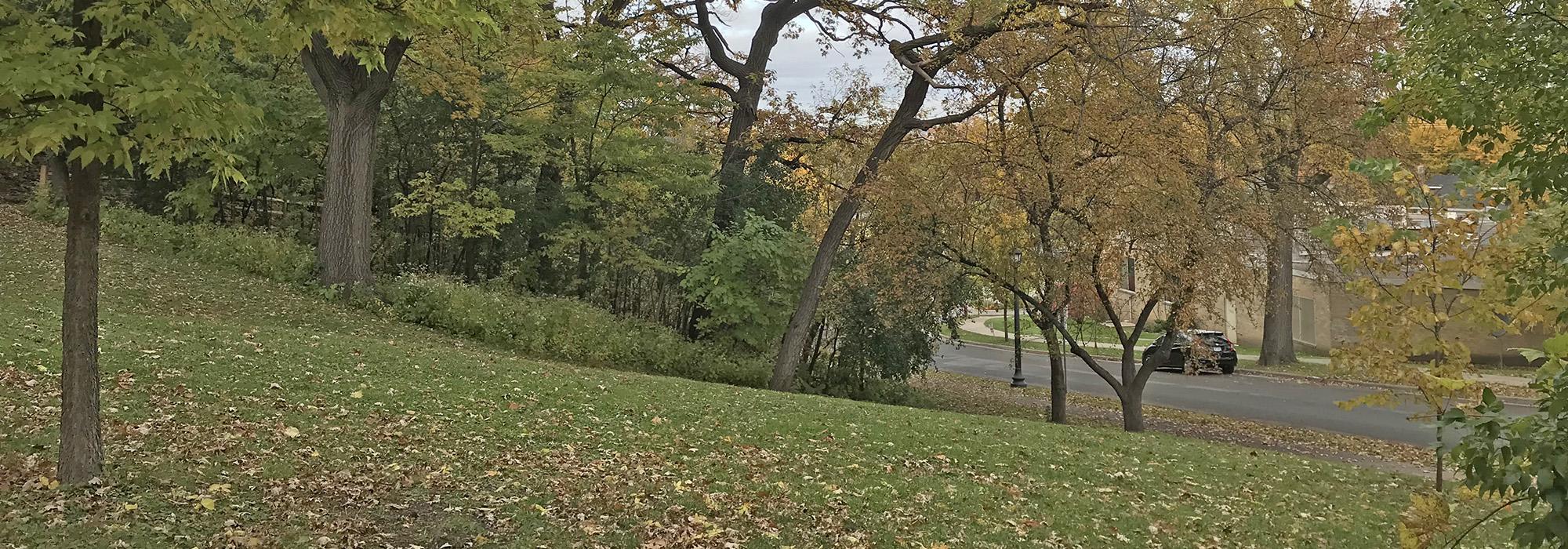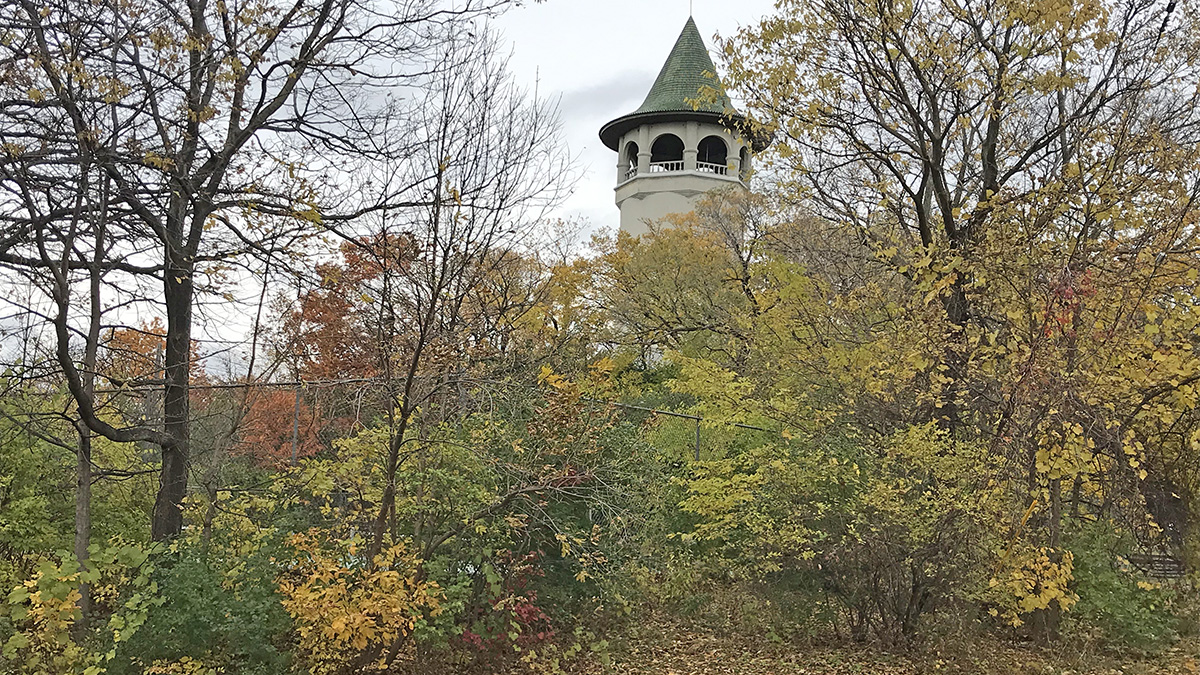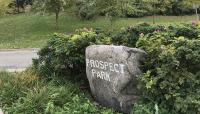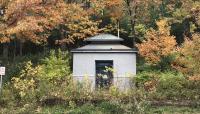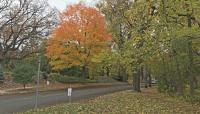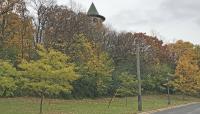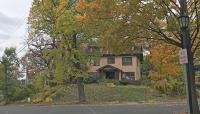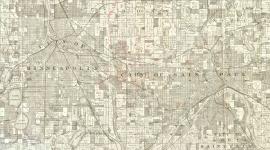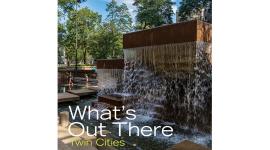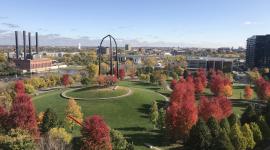Landscape Information
Located in southeast Minneapolis just east of the University of Minnesota campus, this 800-acre residential enclave has the Minneapolis-St. Paul boundary as its eastern edge. The 4.7-acre Tower Hill Park on the neighborhood’s northern side holds the Prospect Park Water Tower atop a hillcrest some 917 feet above sea level, one of the highest points of land in the city. Designed by City Engineer Frederick W. Cappelen (1913-14) to improve poor water pressure that initially inhibited the neighborhood’s development, the tower features a conical roof clad in terracotta tiles, popularly known as the “witch’s hat,” which is visible miles away.
First platted in 1884 by civil engineers Samuel H. Baker and Joseph H. Gilmore, the streets were laid out to take advantage of a series of roughly rolling hills known as "hardheads" extending from St. Paul’s Saint Anthony Park neighborhood into Minneapolis, dropping off into sand dunes along the Mississippi River at Prospect Park’s south edge. Prospect Park’s curvilinear layout was adopted to lay lightly on the land, resulting in landscaped triangles at intersections where canopy trees (e.g. elms, oaks) were preserved and planted and understory plantings were introduced. Some also hold freestanding boulders, including one inscribed “Prospect Park” in the triangle at University and Malcom Avenues by Tower Hill Park, a prominent entry to the neighborhood. Streets are edged with curbs and lined by sidewalks and canopy trees. Cast-iron lamp standards installed in 2000 are based on an earlier design historically used throughout the city.
Houses in Prospect Park display a diversity of styles including Queen Anne, Shingle, Craftsmen, Colonial Revival and Prairie, and the neighborhood is unusual in Minneapolis for its concentration of architect-designed modern houses, some by locally and nationally prominent architects such as Frank Lloyd Wright and Elizabeth and Winston Close. In addition to residential lots with freestanding barns, garages, and other outbuildings, there are three churches, a school, and a few commercial structures.
Tower Hill Park was added to the National Register of Historic Places in 1997. The Prospect Park Residential Historic District was added in 2015.



